HVAC Zoning Controls Temperature and Lowers Utility Bills
Wouldn’t it be nice to have more than one thermostat?
Zone controlling temperatures can have many benefits, including:
- Personalized temperatures in each room or area like upstairs and downstairs living
- Greater energy efficiency by not needlessly cooling or heating an empty room
- More eco-friendly operation
- Improved air quality
- Longer lasting HVAC systems
Temperature zoning control divides your home or business into different areas, and then heating or cooling them as needed. It’s an ideal way to eliminate hot and cold spots.
A zoned heating and cooling system allows your furnace and air conditioner to use dampers in the ductwork to direct air to specific areas when needed. Zoned systems help you use your heating and cooling more effectively by distributing air where and when it is needed.
HVAC zoning can improve comfort and lowers utility bills up to 35% with multiple programmable thermostats according to the US Dept of Energy.
Is Home Temperature Zoning Right For You?
A typical zoned heating system treats the main floor as one heating zone and the upstairs as a separate heating zone. This allows heat to be directed to the main floor during the daytime and to the upstairs bedrooms at night, allowing unoccupied areas of the home to cool down when vacant.
Dividing Your Place Into Two Or More Zones
Do you have some rooms that are cooler or warmer? Does your home have two or three levels, large windows, rooms that you seldom use? Ideally, your entire home should stay about the same temperature. But insulation, duct size, window size, sunshine, room size, ceiling heights, room location all influence your comfort.
Zoning helps eliminate temperature inaccuracies from using only one thermostat sensor point. That means people in different areas can adjust their own thermostat and temperature to meet their needs. Now you can turn off zones when no one is using them.
One Thing Is Certain
Don’t try to install an HVAC zoning system if your building has problems like poor insulation or air leaks.
4 Main Components Of Temperature Zoning:
- Control panel— is installed at your furnace and reads the different thermostats and triggers the dampers to open or close.
- Duct dampers—HVAC zoning duct dampers are the valves in your ducts that open and close. Two zones are common but you can do four zones or more for commercial.
- Zone thermostats—Yes, each zone gets a thermostat to send messages to the control panel.
- Multi-stage furnace, variable-speed blower—When there is less heat needed, this type of furnace can adjust to a lower setting.
HVAC Zoning Savings and Comfort
The average household spends 40% on energy bills for heating and cooling costs (about $2200). Home temperature zoning or HVAC zoning helps you save energy overheating or overcooling certain areas by using dampers in your duct system.
Ask About The Latest Special Offer
Contact PDM Plumbing, Heating, Cooling Since 1885 for free temperature zoning advice. Serving greater Joliet, Plainfield, New Lenox Bolingbrook, Homer Glen and SW Chicago Suburbs for 139 years. Call [phone_link].
.






